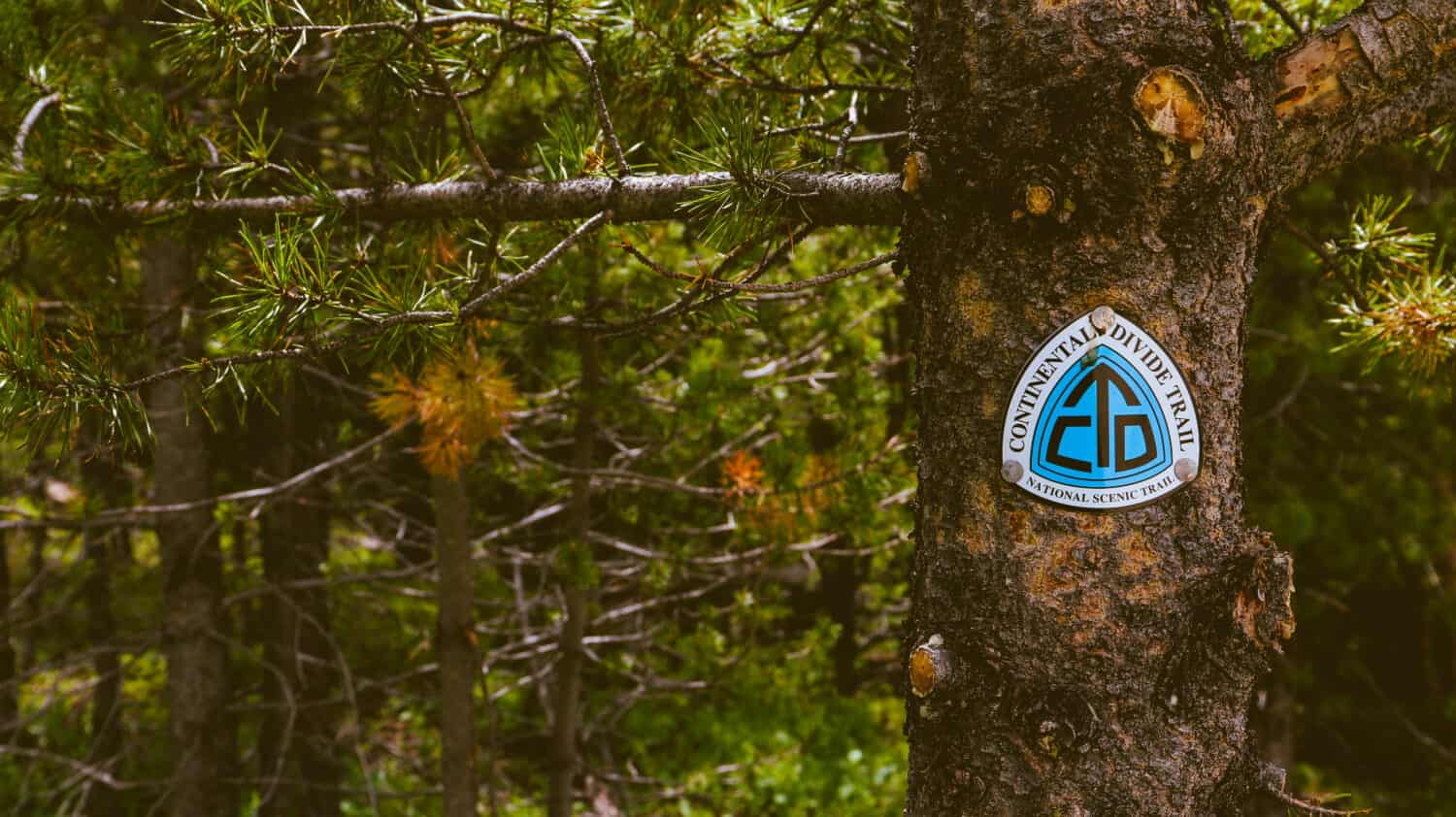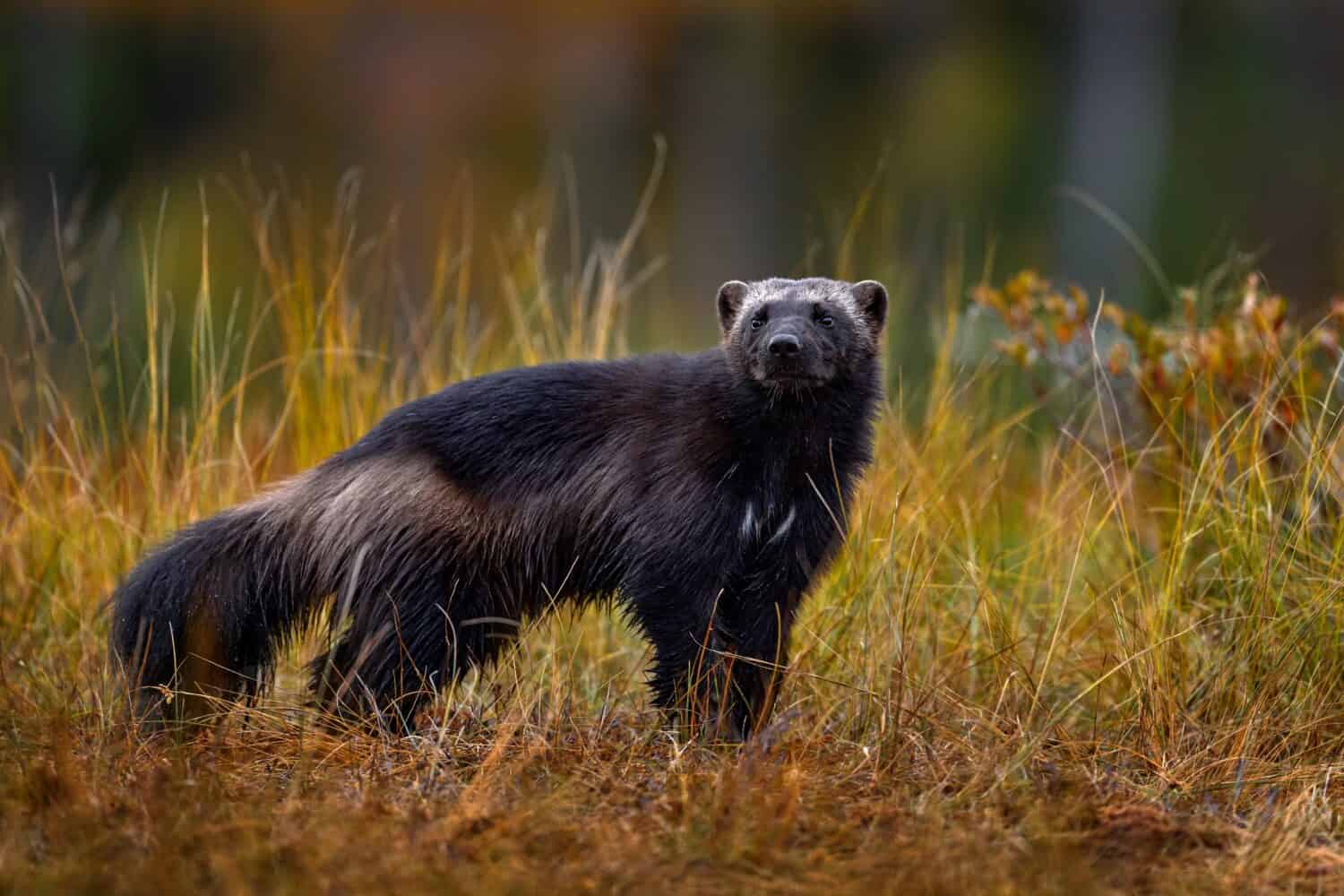The Continental Divide Trail, often called the CDT, stands as one of North America’s most ambitious long-distance hiking trails. It is also among the 11 National Scenic Trails in the United States.
Stretching approximately 3,100 miles from the border of Mexico to the border of Canada, the trail follows the rugged spine of the Continental Divide, a geographic phenomenon that runs through the heart of the Rocky Mountains.
The Continental Divide Trail crosses several states: Montana, Idaho, New Mexico, Colorado, and Wyoming. Each new section traverses through its diverse ecosystems and landscapes to offer different experiences for visitors.
Let’s explore some lesser-known facts about the Continental Divide Trail in Idaho.
1. Idaho’s Portion of the CDT Is Extremely Remote and Wild

Most of the area along the CDT in Idaho is uninhabited wilderness, far from towns and cities.
©Sarah Michals/Shutterstock.com
The state of Idaho boasts some of the most remote and untouched sections of the Continental Divide Trail. The CDT traverses many wilderness areas in Idaho, including the Frank Church River of No Return Wilderness, the Sawtooth Wilderness, and the Selway-Bitterroot Wilderness, among others. These vast stretches of protected land are untouched by development, providing hikers with a wild experience.
Unlike some areas of the CDT, where it crosses populated areas, the trail in Idaho is highly remote. Most of the trailheads and access points are miles apart. Once in Idaho, CDT hikers have to carefully plan their resupply points and be self-sufficient for longer stretches. Additionally, hikers can expect little to no cell phone reception on most of the trail’s portion in Idaho. Hikers need to be prepared once they attack these portions, specifically in case of an emergency.
Due to the remote nature of the trail in Idaho, hikers are most likely to encounter wildlife. On the CDT path, the Selkirk Mountains are home to a small population of grizzly bears. While encounters with grizzlies are rare, they can be extremely dangerous. Hikers can also encounter bears, elks, mountain lions, and wolves. While it can be an incredible experience, hikers must always be aware of their surroundings. Additionally, proper food storage and wildlife safety practices are crucial.
Hiking the CDT in Idaho is ideal for hikers looking to disconnect from the hustle and bustle of life.
2. Idaho’s CDT Is a Challenging Portion

Hikers will come across stunning mountain ranges like the Sawtooth Mountains.
©Charles Knowles/Shutterstock.com
The Continental Divide Trail in Idaho boasts a set of unique challenges for hikers. First, the trail’s portion is almost only rugged terrain. Hikers will have to go through steep ascents and descents, rocky ridges, and more. The terrain is physically demanding, requiring a high level of fitness and agility.
The trail goes through multiple mountain ranges, including the Boulder Mountains, a subrange of the Rockies. It is also the home to the Bitteroots and Sawtooth’s mountain ranges. These mountains are famous for their stunning vistas and pristine alpine lakes. However, these are home to the highest elevation of the CDT in Idaho, with peaks towering over 10,000 feet (over 3,048 meters). With the high elevation can come altitude-related challenges, such as altitude sickness and reduced oxygen levels. Proper acclimatization and awareness of altitude-related issues are vital for the hikers’ safety.
The high mountain ranges are known for their unpredictable weather patterns. In the winter, sudden snowfall and hail can happen, while hikers can experience sudden thunderstorms in the summer. Hikers should also be prepared for extreme temperatures. Winter nights at high elevations can be freezing, while in the summer, hiking can be challenging under high temperatures, especially in lower elevations.
Additionally, the CDT in Idaho crosses numerous rivers and streams. These crossings can be challenging during spring and early summer due to high snowmelt water levels. It is essential for their safety that hikers learn how to be skilled in assessing the safety of river crossings.
Finally, the CDT’s portion in Idaho lacks well-marked signage. Hikers should learn basic navigation skills and carry GPS devices as well as maps and compasses. This is crucial as some of the trail sections might be overgrown, washed out, or obstructed by fallen trees. With navigation skills, hikers can easily find alternative routes if needed.
3. The Continental Divide Trail Winds Near Historic Ghost Towns

Gold was first discovered in Idaho in the 1860s.
©btdigital/Shutterstock.com
One unique feature of the Continental Divide Trail in Idaho is the many ghost towns hikers will come across. It’s almost like stepping back into the golden days of the Wild West. These abandoned settlements, which thrived during the late 19th and early 20th centuries, now offer a glimpse into the region’s mining heritage and history.
Bayhorse
Along the CDT is Bayhorse, an ancient silver mining town that thrived in the late 1800s. Thanks to its rich ore deposits, the town briefly became one of the largest mining centers in Idaho. It was home to stamp mills, smelters, and a maximum population of around 300 people. Hikers can observe abandoned buildings and mining equipment.
Bonanza City
Nestled in the Sawtooth Mountains, Bonanza City was a short-lived mining town in the 1880s. Its name came from the Bonanza Mine, which produced a significant amount of silver. At its peak, the town had over 600 residents, saloons, and several stores. Bonanza City’s prosperity was fleeting, like many mining towns, and it quickly declined.
Custer
In the Challis National Forest, Custer was established during the 1870s gold rush. With a population of, at best, 600 people, the town had a hotel, a post office, and stores. When the gold ran out, inhabitants flew the town, and Custer became a ghost town. Today, hikers can see abandoned buildings, including a church and a schoolhouse.
Gilmore
In the Lemhi Range, Gilmore was a bustling mining town in the late 1800s, famous for its silver and lead mines. These attracted a diverse community of miners and entrepreneurs. At its peak, 600 people lived in Gilmore, with a school and several saloons. Nowadays, hikers can observe a few abandoned buildings.
Yankee Fork
Yankee Fork is a historical site in the Custer Ghost Town area. It features abandoned buildings and mining equipment. This includes a massive gold dredge, still relatively well-preserved, that offers insight into the area’s mining operations during the early 20th century. Visitors and hikers can explore the dredge and the surrounding buildings to learn about the region’s mining history.
4. Idaho’s CDT Is Home to Multiple Hot Springs

Idaho has more than 200 natural hot springs.
©linber/Shutterstock.com
Thanks to geography and geology, Idaho is home to famous natural hot springs. Some of them are located near the trail, making them perfect relaxing spots for hikers on the CDT. When visiting the hot springs, hikers should not leave anything behind to protect the environment.
Burgdorf Hot Springs
Located near McCall, Idaho, Burgdorf Hot Springs offers a secluded experience. This historic hot spring retreat has private pools for cabin guests. It’s an excellent place for CDT hikers to rest and rejuvenate, surrounded by a forested landscape.
Goldbug Hot Springs
Near the town of Salmon, Goldbug Hot Springs is a famous hot spring destination along the CDT in Idaho. After a hike through a forested canyon, hikers can soak in a series of natural pools and enjoy picturesque views of the surrounding mountains.
Jerry Johnson Hot Springs
Located in the Clearwater National Forest near the Lochsa River, the Jerry Johnson Hot Springs is a great place to relax. CDT hikers can take a side trip to the hot springs to relax and enjoy the forested setting.
Trail Creek Hot Springs
Tucked away in the Sawtooth National Recreation Area, the springs are close to the town of Stanley. The pools are situated along Trail Creek, a great stop for hikers exploring the Sawtooth Mountains along the CDT.
Pine Flats Hot Springs
Pine Flats Hot Springs is a remote and hidden gem along the Middle Fork of the Salmon River. The secluded spot is accessible by a side trail. CDT hikers, kayakers, and rafters often enjoy these springs.
Kirkham Hot Springs
Near Lowman, the Kirkham Hot Springs cascade down a hillside, creating a series of pools. These offer a unique blend of hot and cold water. These springs are a popular stop for hikers and travelers along the CDT.
5. In Idaho, the CDT Crosses the ICT

The Idaho Centennial Trail (ICT) is a 900-mile-long trail crossing the entire state of Idaho.
©Kirk Fisher/Shutterstock.com
In Idaho, the Continental Divide Trail (CDT) crosses with the Idaho Centennial Trail (ICT). This is a significant point of interest as it offers hikers the opportunity to explore two iconic long-distance trails.
Both trails intersect in Idaho’s northern part, within the stunning Selkirk Mountains, in the extensive Idaho Panhandle National Forests. Hikers will admire stunning vistas, unique fauna, and flora at the intersection. Both trails then follow the same path for several miles before splitting. They both offer varying terrain, landscapes, and ecosystems.
6. The Continental Divide Trail Is Home to Some Unique Wildlife

The wolverine worldwide population is estimated to be from 15,000 to 30,000 individuals.
©Ondrej Prosicky/Shutterstock.com
Idaho’s Continental Divide Trail (CDT) segment is a wildlife enthusiast’s paradise. It offers diverse ecosystems and habitats that support a wide array of unique and fascinating animals.
Wolverines
The wolverine is one of the most elusive and iconic species hikers can encounter along Idaho’s portion of the CDT. These solitary and powerful carnivores live in the remote and high-altitude regions of the state, including the Sawtooth Range. Wolverines are famous for their incredible stamina and tenacity.
Lynx
The Canadian lynx, with its distinctive tufted ears, inhabits Idaho’s northern regions. This elusive feline is well adapted to the cold and snowy climates of the Selkirk Mountains. Hikers must be lucky to catch a glimpse of these very discreet cats.
Mountain Goats
Hikers can spot mountain goats high in the cliffs and rocky terrain of the CDT. Their impressive agility allows mountain goats to easily navigate the most treacherous mountain slopes, making them a remarkable sight for hikers.
Grizzly Bears
A small population of grizzly bears still live in the Selkirk Mountains and the northernmost sections of Idaho. Encounters are rare, but hikers should always be prepared.
Gray Wolves
After being largely endangered in Idaho, gray wolves now thrive in the more remote sections of the CDT. These apex predators play a vital role in the ecosystem’s balance.
Northern Goshawks
In some portions of the CDT in Idaho, hikers can observe the elusive Northern goshawk. These raptors thrive in Idaho’s coniferous forests and are renowned for their keen hunting skills.
Trouts
Idaho’s mountain lakes and streams along the CDT offer a haven for native cutthroat trout and Yellowstone Cutthroat Trout. Both of these species are a prized catch for anglers and a crucial part of the region’s aquatic ecosystem. The Yellowstone cutthroat trout specifically lives in the eastern part of the state, where the CDT passes through the Greater Yellowstone Ecosystem.
The photo featured at the top of this post is © Ryan DeBerardinis/Shutterstock.com
Thank you for reading! Have some feedback for us? Contact the AZ Animals editorial team.







